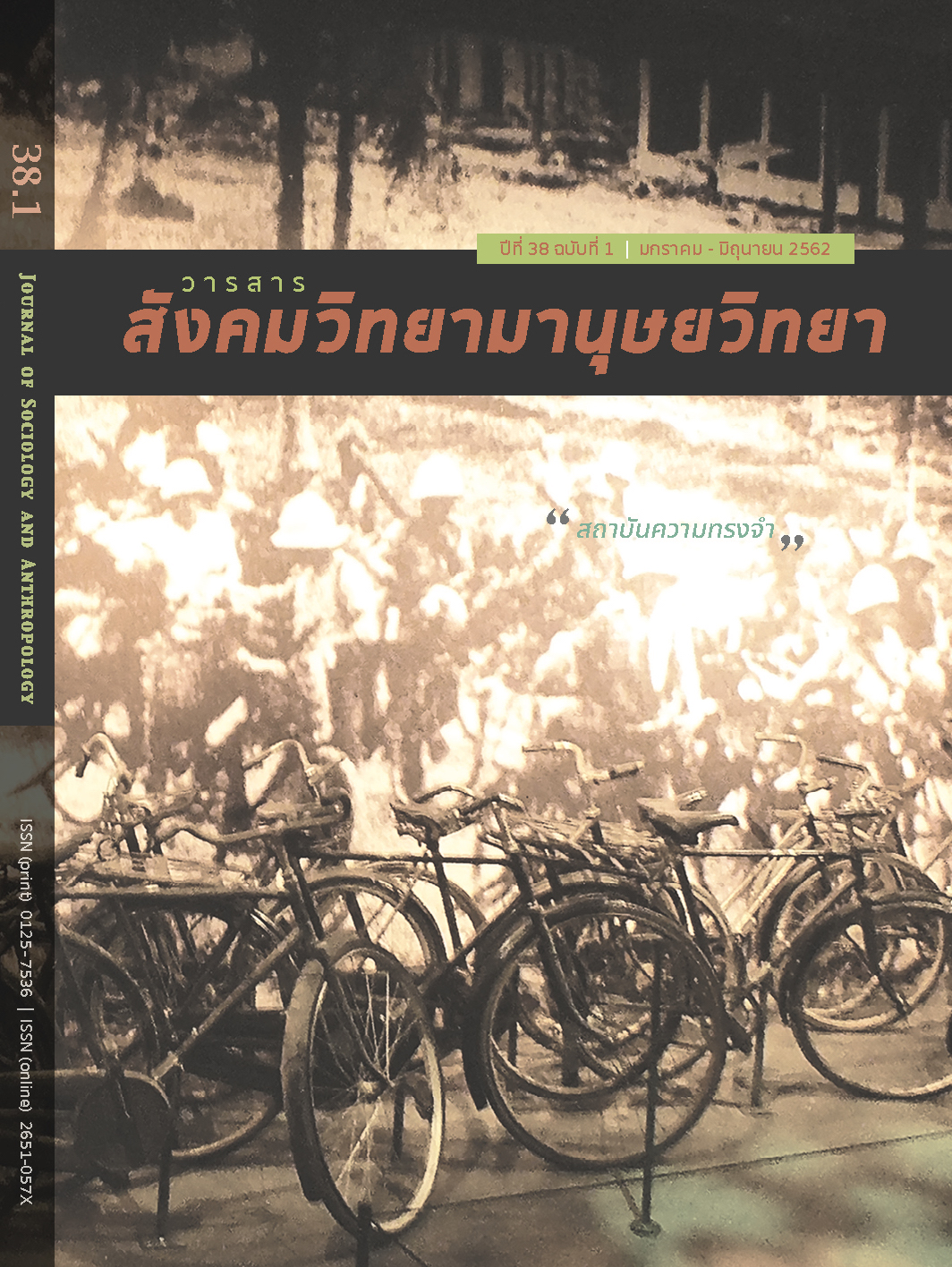“พิพิธภัณฑ์วิทยาใหม่”: กรณีศึกษาบ้านฮอลันดา ศูนย์ข้อมูลประวัติศาสตร์ ความสัมพันธ์ไทย-เนเธอร์แลนด์ในอยุธยา
คำสำคัญ:
New Museology, Theory in action, Audience Focused, Radical Transparency, Community Participationบทคัดย่อ
บทความนี้อภิปรายการประยุกต์ใช้แนวทาง “พิพิธภัณฑ์วิทยาใหม่” ในการพัฒนาศูนย์ข้อมูล-ประวัติศาสตร์ บ้านฮอลันดา จังหวัดพระนครศรีอยุธยา ผู้เขียนนำเสนอภาพรวมของหลักพื้นฐานสามประการของแนวทางพิพิธภัณฑ์ใหม่ ตามข้อเสนอของปีเตอร์ ฟาน เมนช์ นักวิชาการที่มีบทบาทสำคัญของกระแสพิพิธภัณฑ์วิทยาใหม่ อันได้แก่ พิพิธภัณฑ์วิทยาที่ตระหนักในความสำคัญของชุมชน พิพิธภัณฑ์ที่เปิดกว้างสำหรับคนทุกกลุ่ม และมโนทัศน์ “สถานที่แห่งความทรงจำ” จากประสบการณ์ในฐานะที่ปรึกษาโครงการของบ้านฮอลันดา ตั้งแต่ ค.ศ. 2010 ผู้เขียนอภิปรายการประยุกต์แนวทางพิพิธภัณฑ์วิทยาใหม่เข้าไปผสมผสานในกระบวนการพัฒนาศูนย์ข้อมูลฯ ใน 4 ด้าน ได้แก่ 1) การจัดแสดงที่เน้นผู้ชมเป็นจุดศูนย์กลาง 2) ความโปร่งใสในการนำเสนอข้อมูล 3) การมีส่วนร่วมของชุมชน และ 4) การออกแบบ ซึ่งส่งผลให้ บ้านฮอลันดา เป็นที่ยอมรับในวงกว้างมากขึ้น ตลอดจนได้รับความเห็นในเชิงบวกจากผู้เข้าเยี่ยมชม ผู้ปฏิบัติงานและผู้เชี่ยวชาญด้านพิพิธภัณฑ์ ความสำเร็จของ บ้านฮอลันดา จะช่วยส่งเสริมให้สถาบันพิพิธภัณฑ์อื่นๆ ในประเทศไทยเห็นความเป็นไปได้ในการเปลี่ยนผ่านจากทฤษฎีสู่ปฏิบัติการ โดยมีแนวทางพิพิธภัณฑ์วิทยาใหม่เป็นหนึ่งในทางเลือกสำคัญ
เอกสารอ้างอิง
Dodd, Jocelyn, and Richard Sandell. 2001. Including Museums: Perspectives on museums, galleries and inclusion. Leicester: Research Centre for Museums and Galleries, Department of Museum Studies, University of Leicester.
Graham, Black. 2012. Transforming Museums in the Twenty-first Century, London and New York: Routledge.
Halbwachs, Maurice. 1992. On Collective Memory. Chicago: University of Chicago Press.
Krouse, Susan Applegate. 2006. “Anthropology And The New Museology.” Reviews In Anthropology 35(2): 169-182.
McCall, Vikki, and Clive Gray. 2014. “Museums and the ‘New Museology’: Theory, practice and organisational change.” Museum Management and Curatorship 29(1): 1-17.
McLean, Kathleen. 1993. Planning For People in Exhibitions. Canberra: Association of Science - Technology Centers.
Morris Hargreaves Macintyre Agency. 2005. Never Mind the Width: Feel the Quality. Manchester: Morris Hargreaves Macintyre Agency. Accessed March 18, 2017. https://mhminsight.com/articles/never-mind-the-width-5088.
Sandell, Richard. 1998. “Museums as Agents of Social Inclusion.” Museum Management and Curatorship 17(4): 401-418.
Sandell, Richard. 2003. “Social Inclusion, the Museum and the Dynamics of Sectoral Change.” Museum and Society 1(1): 45-62.
Serrell, Beverly. 2015. Exhibit Labels: An interpretive approach. Lanham, London and New York: Rowman and Littlefield.
Simon, Nina. 2011. The Participatory Museum. Savannah: Museum 2.0.
Staiff, Russell. 2014. Re-imaging Heritage Interpretation: Enchanting the past-future. Farnham, Surrey & Burlington, Vermont: Ashgate Publishing Group.
van Mensch, Peter. 2004. “Museology and Management: Enemies or friends? Current Tendencies in Theoretical Museology and Museum Management in Europe.” In Museum Management in the 21st Century, edited by Eiji Mizushima, 3-19. Tokyo: Museum Management Academy.
Vergo, Peter, ed. 1989. The New Museology. London: Reaktion Books.



